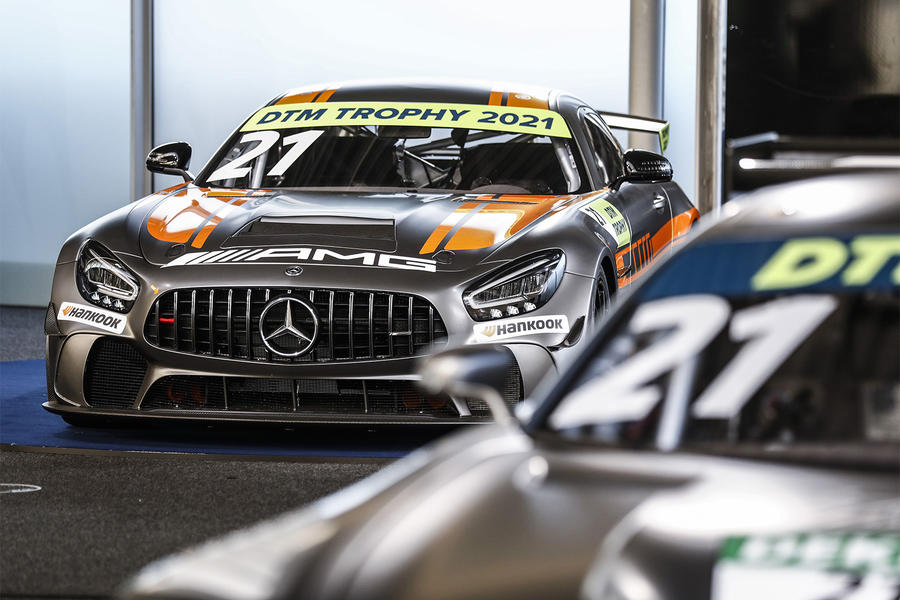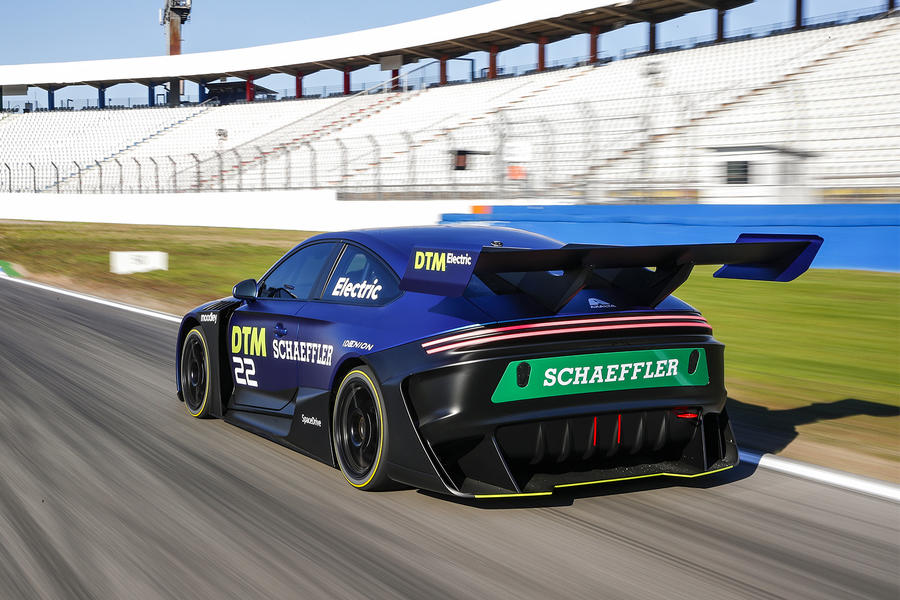DTM hopes to attract a “wide variety of brands” from 2021
Germany’s premier racing series is ditching obsolete touring cars
The Deutsche Tourenwagen Masters (better known as the DTM): is it really the best touring car championship in the world? Not any more. The jewel of German motorsport has this month marked the end of an era that stretches back to 1984 by completing its final season of supposed saloon car racing (although in truth, the ‘silhouette’ racers haven’t looked much like road cars for years). For next season, it will be reinvented as a GT3 series. Yes, another one. The change is born not from some far-thinking vision but sheer necessity. The DTM as it was had simply become obsolete.
Nothing in motorsport used to matter more to the big three German premium brands. But then Mercedes-Benz dropped the once-unthinkable bombshell that it was pulling out of the DTM at the end of 2018. And when Audi confirmed that it too was withdrawing at the conclusion of this season, not long after the collapse of Aston Martin’s short-lived customer-supported programme, a drama became a crisis. With only BMW left, the race was on to find a new path to keep the DTM alive.
Why turn to GT3?
Plotting that route has been quite an ordeal for series boss Gerhard Berger, the ex-Formula 1 star who drove for Benetton, Ferrari and McLaren in the 1980s and 1990s. But at Hockenheim recently, there was little sign of any new-found DTM humility in the face of the enforced reinvention. Then again, its assumed and long-established superiority complex over other European tin-top series, such as our own British Touring Car Championship, was never going to wilt in the face of such a minor quibble as having no cars or entries.
The silhouette formula, with racers based on the Audi RS5 and BMW M4, had in 2019 attempted to move closer towards road relevancy by ditching the once-sacrosanct 4.0-litre normally aspirated V8s for in-vogue 2.0-litre four-cylinder turbo engines.
It was also no coincidence that these were the same engines used by Japan’s well-supported Super GT series, edging the DTM towards a long-discussed alliance that even led to a trial unification ‘dream race’ at Fuji last autumn.

The DTM’s trademark technical sophistication, including an F1-style drag reduction system, was maintained with the new engine rules and, in fairness, any perceived dumbing-down was successfully skirted. But, as mirrored in F1 by Honda’s impending withdrawal, it wasn’t nearly enough to justify maintaining high-profile motorsport programmes for put-upon manufacturers, which increasingly have tunnel vision for what can help them meet their emissions targets.
Berger’s options for creating something new and relevant in less than 12 months were clearly limited, so GT3 absolutely makes sense, given the continuing growth of a form of racing in which pretty much every significant high-end brand is represented. But how to differentiate the DTM from the myriad national and international GT3 series that span the globe?
A GT3-plus formula seemed on the cards at first, but by the time of the announcement at Hockenheim a fortnight ago, the DTM admitted that it would simply adopt the FIA-sanctioned regulations, albeit using its own Balance of Performance and success ballast rules to artificially equalise competitiveness.
The same… but better?
It seems Berger is relying on good old-fashioned DTM firepower to muscle in on the GT3 scene. When asked directly about any potential clash with Germany’s national GT Masters series, for example, the Austrian batted away any concern – although it’s rare for the 10-time grand prix winner to be ruffled by anything.
“We have a professional sprint-race format and GT Masters is customer racing with an endurance format,” he said. “We have a strong TV package and a fan base established over 30 years.”
Two races of 55 minutes plus one lap will maintain the DTM’s recipe for quick-fire entertainment. A mid-race tyre change will remain mandatory to keep strategic spice, but driver changes won’t come in, even if sports car-style rolling starts will.

Berger reckons there are “some commitments from teams” but it’s “early days” to name names – and, to be fair, such are the strengths of the DTM that it’s unlikely to be short of entries when a new nine-event schedule begins next May, pandemic-permitting. Sadly, a visit to Brands Hatch hasn’t been reinstated, while a race on the Nürburgring Nordschleife is a “dream”, said Berger – “but I can’t promise it”.
A promising future
While GT3 goes from strength to strength, Berger inevitably has one eye on the apparent electric future for global motorsport. He has announced “five pillars” of the DTM: the main series, continuing development of the GT4-based DTM Trophy for young drivers, an esports championship, a DTM Classic series for historic cars (which the fans will surely relish) and DTM Electric, a support series cautiously pencilled in to start in 2023.
Naturally, performance targets are ambitious for the electric DTM car that’s being conceived and developed by Schaeffler. The goal is for more than 1000bhp, along with features such as non-mechanical steer-by-wire technology, for races of 30 minutes – double the length of the recently announced Pure ETCR series’ head-to-head format. But let’s see what’s actually possible.
Meanwhile, René Rast can reflect with satisfaction on winning his third title in just four years in the ‘old’ DTM. Already equal on titles with the legendary Klaus Ludwig and two behind Bernd Schneider’s record, the German is also a dab hand at GT3 and a winner of both the Nürburgring 24 Hours and Spa 24 Hours. At 34, he’s a ready-made A-lister for the DTM’s new era.
READ MORE
Racing Lines: BTCC finale will be luck of the draw
Source: Autocar
